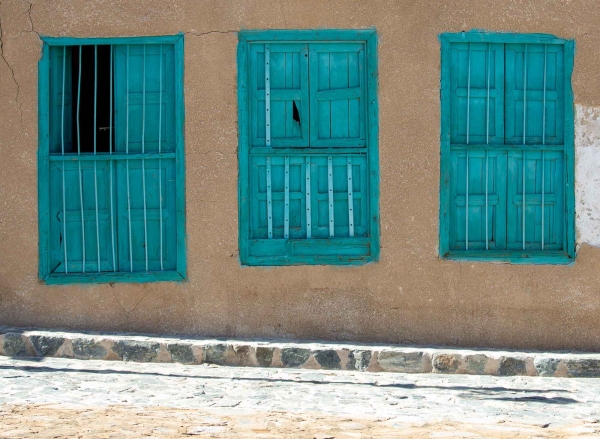

Ad-Daraysh, windows, or casements, were the main source of light and ventilation for old houses in the traditional architecture of the Kingdom of Saudi Arabia. Additionally, they made the interior empty spaces within these homes suitable for habitation.
As a whole, ad-Daraysh form a visually aesthetic unit. Their unique arrangements on building facades follow a balanced geometric system with an aesthetic flair that adds a vibrant touch to the dull walls of mud houses while preserving privacy and modesty.
Characteristics of ad-Daraysh
Ad-Daraysh are typically constructed with rectangular or square wooden frames, internally divided into four or three wooden sections, depending on the frame's size. Except for the top and bottom panes, each pane is called a (Rastah), while the top and bottom are referred to as (Ataba). Parallel iron bars run between all these sides. At the top of the window, there is a complementary part called al-Hilal or al-Qamariya, similar to doors, whose shape is semicircular. The interior glass of the windows is composed of various colored glasses and wood, arranged in a quarter-circle pattern within the crescent shape. The glass colors vary between red, blue, yellow, green, and transparent white, creating a diverse interplay when sunlight reflects off them. If the upper part of the window is designed in a rectangular shape, it is called 'Kuttabi.' In this design, the empty sections are filled with iron rods or colored glass, and it is widely popular in al-Qatif Governorate in the Kingdom.
The work mechanism of ad-Daraysh
Ad-Daraysh or the windows are closed using an attached frame that is controlled by a pivot at its four corners. Their closure is secured by al-Makri, a small movable wooden piece positioned at the top and bottom. They have several types and additions that overlook the house's facade, such as al-Roshan, which is a window opening approximately thirty cm high and sixty cm wide. It is the simplest type of window and is closed with a bundle of straw or a piece of wood to reduce openings, depending on climatic conditions, to control ventilation. Additionally, there is 'al-Lawzi,' a wooden fence composed of two opposing layers of thin wooden slats that cover the window or half of it from the outside. It is a practical innovation that emerged with the advent of concrete buildings to provide privacy and regulate the amount of air and light entering the interior space.
Related quizzes


